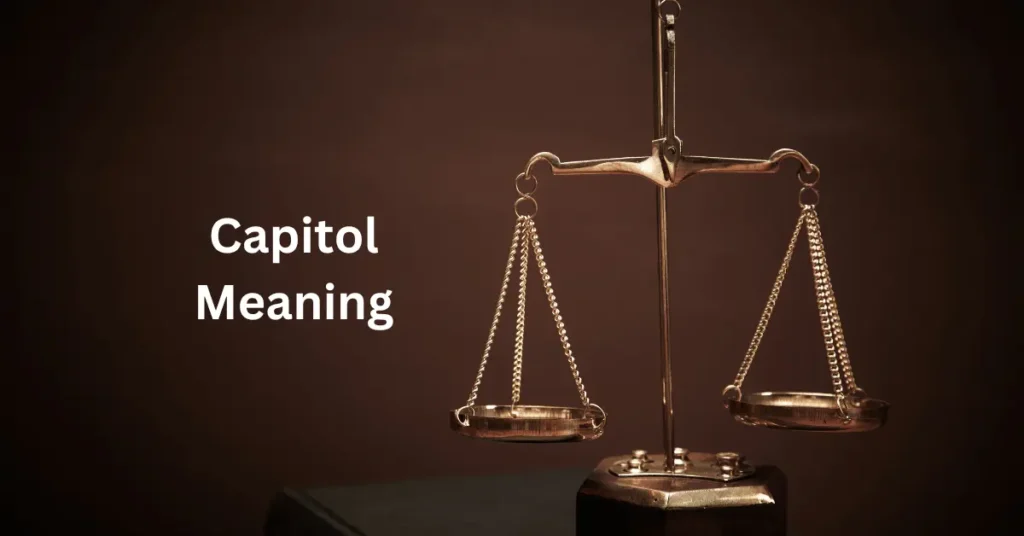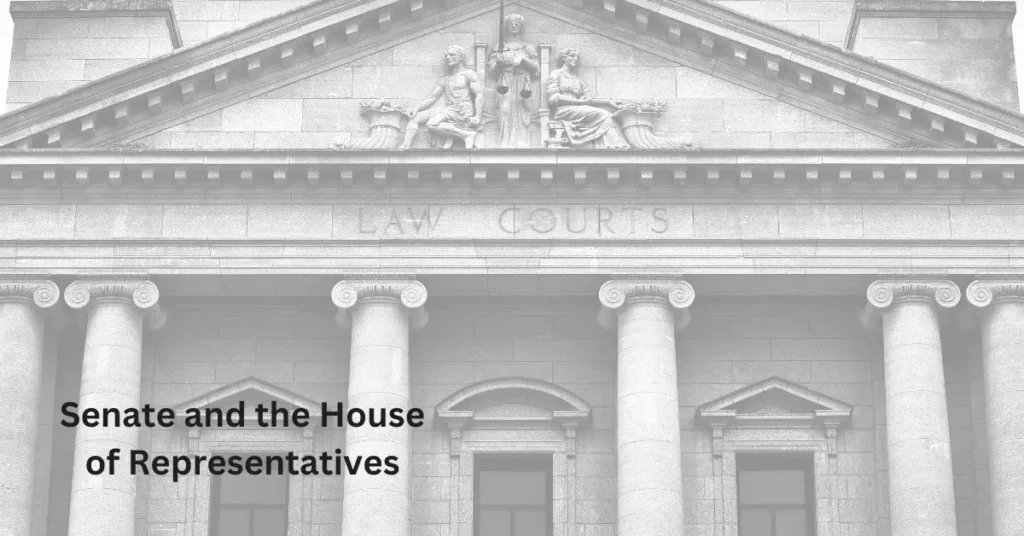Capitol Meaning

Have you ever heard the term “capitol” and wondered what capitol meaning is? It’s a word we often come across when talking about government buildings or the places where laws are made.
But did you know that “capitol” has a very specific meaning? Simply put, a capitol is a building where a state or national legislative body meets, and it’s often known for its grand, dome-shaped design.
In this article, we’ll explore what “capitol meaning” really is, its history, and why it’s so important in shaping the laws we live by.
Whether you’re curious about the U.S. Capitol or your state’s own capitol, this will help clear things up!
What Does Capitol Mean?
The term “capitol” refers specifically to a building where a state or national legislative body comes together to discuss, create, and pass laws.
It’s more than just a place—it represents the center of government activity and decision-making. You might have seen pictures of grand, domed buildings with large columns—that’s often a capitol building in the United States and other countries.
In the United States, the most famous example of a capitol is the U.S. Capitol Building in Washington, D.C., where Congress (the Senate and the House of Representatives) meets to carry out legislative work.
But while the U.S. Capitol is well-known, each state has its own capitol building, typically located in the state’s capital city.
For example, in California, the California State Capitol is where the state legislature meets to create laws specific to that state.
The domed shape of many capitol buildings isn’t just for show—it symbolizes the importance of the work done within.
The dome often represents the “idea” of government and law, which stands above everything else. It’s a visual reminder of the structure and authority of the legislative process.
Capitol buildings are typically designed with impressive and grand architecture, often featuring large chambers, hallways, and statues that reflect the culture and history of the place.
These buildings are often symbols of democracy, reflecting the importance of the people’s voice in shaping laws and policies that affect everyone.
So, in simple terms, when we talk about the “capitol,” we are referring to the building where lawmakers gather to do the important work of governing, making decisions that shape the future of a state or country.
Capitol Meaning: Definition
The term “capitol” refers specifically to a building where a legislative body—either at the state or national level—meets to make laws and discuss matters of governance.
It’s not just any government building, but the central place where elected officials gather to debate and pass laws that impact their citizens.
A capitol is a legislative building, often large and grand, where lawmakers from a state or country meet to debate, create, amend, and pass laws.
The word “capitol” is often associated with buildings that feature domes and columns, making them stand out as symbols of authority and democracy.
In the United States, “capitol” refers to both the U.S. Capitol Building in Washington, D.C., where the U.S. Congress meets, and to individual state capitols where state legislatures meet to discuss laws affecting their respective states.
Examples of Capitol Buildings
U.S. Capitol Building (Washington, D.C.)
The most well-known example of a capitol building is the U.S. Capitol in Washington, D.C.
This is the seat of the United States Congress, where both the Senate and the House of Representatives meet to create federal laws.
The U.S. Capitol is famous for its massive dome, which symbolizes the strength and importance of the legislative process in American democracy.
California State Capitol (Sacramento, California)
Every state in the U.S. has its own capitol building. For example, in Sacramento, California, the California State Capitol houses the California State Legislature, which is responsible for creating state laws.
This building also features a dome and grand architecture, symbolizing the importance of lawmaking at the state level.
Texas State Capitol (Austin, Texas)
In Austin, Texas, the Texas State Capitol is not only a center for legislative activity, but also a historic and architectural landmark.
The Texas Capitol is one of the largest capitol buildings in the U.S. and is known for its beautiful dome, which is larger than that of the U.S. Capitol Building.
Here, the Texas Legislature meets to discuss issues impacting the state.
Ohio Statehouse (Columbus, Ohio)
The Ohio Statehouse in Columbus, Ohio, is another example of a state capitol. The building has a unique design with a rotunda that is often associated with capitol architecture.
This building serves as the home of the Ohio General Assembly, where laws specific to Ohio are made.
Why the Capitol Is Important
The design and location of capitol buildings emphasize their significance in the political and legislative process.
These buildings often become symbolic centers of democracy, where people’s elected representatives meet to decide on matters that affect the entire population.
The distinctive domes and grand architecture represent not just the building’s function, but also the power and importance of the legislative body that meets inside.
Word Origin of Capitol

The word “capitol” has its roots in ancient Roman history and language. Understanding its origin helps to highlight the deep historical significance of the term.
Latin Origins
The word “capitol” comes from the Latin word “Capitolium”, which referred to a specific hill in ancient Rome—Capitoline Hill.
This hill was one of the Seven Hills of Rome and held great importance in Roman political and religious life.
At the very top of this hill stood the Temple of Jupiter Optimus Maximus, the chief temple dedicated to the Roman god Jupiter, who was the ruler of the gods in Roman mythology.
The temple was a symbol of Roman power and authority and also functioned as a political center.
The term “Capitolium” itself is thought to be derived from the Latin word “caput”, meaning “head” or “top,” referring to the Capitolium being located at the highest point in the city.
Over time, “Capitolium” came to refer not just to the hill itself, but also to the important temple and the surrounding area.
From Ancient Rome to Modern Use
As the political and religious significance of the Capitolium Hill grew in ancient Rome, the term began to take on a broader meaning.
It came to represent the center of political life. When the Roman Empire expanded, the idea of the “Capitol” as a center for political power and decision-making spread to other cultures and civilizations.
Adoption in the U.S. and Other Countries
The use of “capitol” as a term for legislative buildings in the U.S. and other countries is directly influenced by ancient Roman practices.
When the United States was forming its government, the framers wanted to create a strong connection between the principles of democracy and the architecture of their new government.
In this context, they chose the name “Capitol” for the U.S. Capitol Building in Washington, D.C., to symbolize the importance of law-making and democracy, just as the Capitolium symbolized the heart of Roman power.
The Evolution of the Term
While “Capitol” originally referred to the Roman hill and temple, it gradually evolved to describe any significant governmental or legislative building.
In modern usage, we see the term applied to legislative buildings in many countries, not just in Rome or the U.S., but also in other parts of the world where legislative bodies meet to pass laws and make important decisions.
This rich history gives the word “capitol” a profound connection to governance, power, and the creation of laws, which is still relevant in its modern-day usage
FAQs
What is the difference between “capitol” and “capital”?
“Capitol” refers to a building where a legislative body meets to discuss and pass laws, while “capital” refers to the city that serves as the center of government for a country or state. For example, Washington, D.C. is the capital of the United States, and the U.S. Capitol is the building where Congress meets.
Why are capitol buildings often domed?
Capitol buildings are often designed with domes as a symbol of the authority and importance of the legislative process. The dome represents the structure and unity of the government, and it serves as a visual reminder of the law-making power inside the building. Domes also have an aesthetic and architectural significance, making the building appear grand and impressive.
Is the U.S. Capitol the only capitol building in the world?
No, the U.S. Capitol is not the only capitol building in the world. Many countries and states have their own capitol buildings. For example, the Canadian Parliament in Ottawa, the Palace of Westminster in London, and state capitol buildings in cities across the United States all serve as legislative centers for their respective countries and regions.
What happens inside a capitol building?
Inside a capitol building, elected officials meet to discuss, draft, and vote on laws and policies. In the United States, for instance, the U.S. Capitol houses the Senate and House of Representatives, where lawmakers debate bills, create laws, and make important decisions regarding national governance. State capitol buildings serve similar purposes at the state level.
Who designed the U.S. Capitol Building?
The original design of the U.S. Capitol Building was created by Dr. William Thornton, a physician and architect, in 1793. Over the years, many architects, including Charles Bulfinch and Thomas U. Walter, made significant changes and additions to the building’s design. The U.S. Capitol is now an architectural masterpiece that represents American democracy and governance.
Conclusion
In conclusion, the term “capitol” refers to a building where legislative bodies meet to create laws and make important decisions.
Whether it’s the U.S. Capitol in Washington, D.C., or the capitol buildings in individual states, these structures symbolize the heart of democratic governance.
With a rich history dating back to ancient Rome, the term has evolved to represent the center of lawmaking in many countries today.
Understanding the meaning of “capitol” helps us appreciate its role in shaping the laws and policies that impact our lives.
Extra Points on Capitol
- Symbol of Democracy: The capitol building is more than just a place where laws are made. It symbolizes the values of democracy, where elected officials represent the people and work together to create laws that affect everyone.
- Architectural Marvels: Capitol buildings are often grand and impressive in design. Many feature iconic domes, columns, and statues that make them stand out as landmarks. These buildings are not just functional but also serve as works of art and history.
- State vs. National Capitols: While we often think of the U.S. Capitol in Washington, D.C., as the main capitol, every U.S. state has its own capitol building where state lawmakers meet. Each one is unique, reflecting the history and culture of the state.
- Historical Significance: The term “capitol” has deep historical roots, tracing back to ancient Rome. The Capitolium was the center of political and religious life, and the idea of the “capitol” as a place for lawmaking spread from there to modern-day governments.
- Public Access: Many capitol buildings are open to the public, allowing people to visit and learn about the legislative process. Visitors can often tour these buildings, sit in on legislative sessions, or explore exhibits about the history and workings of government.